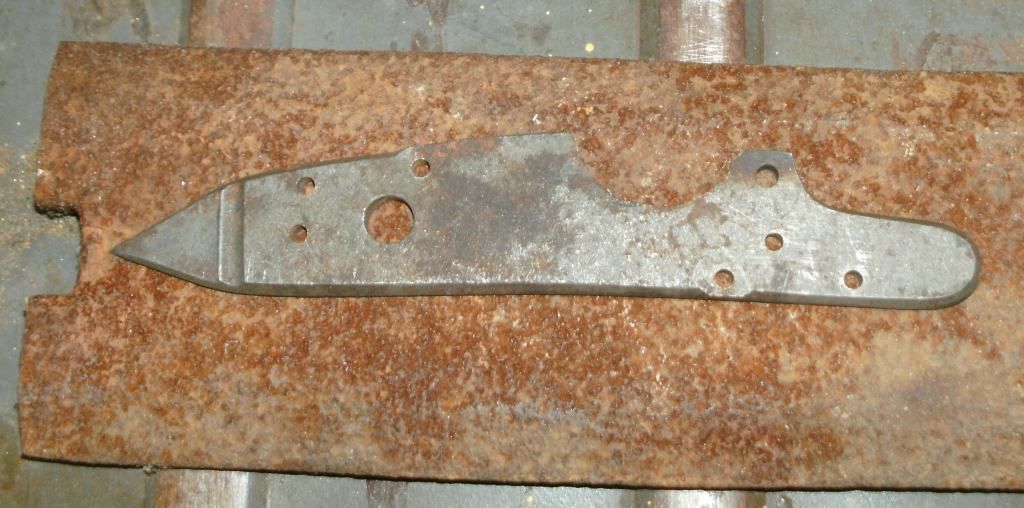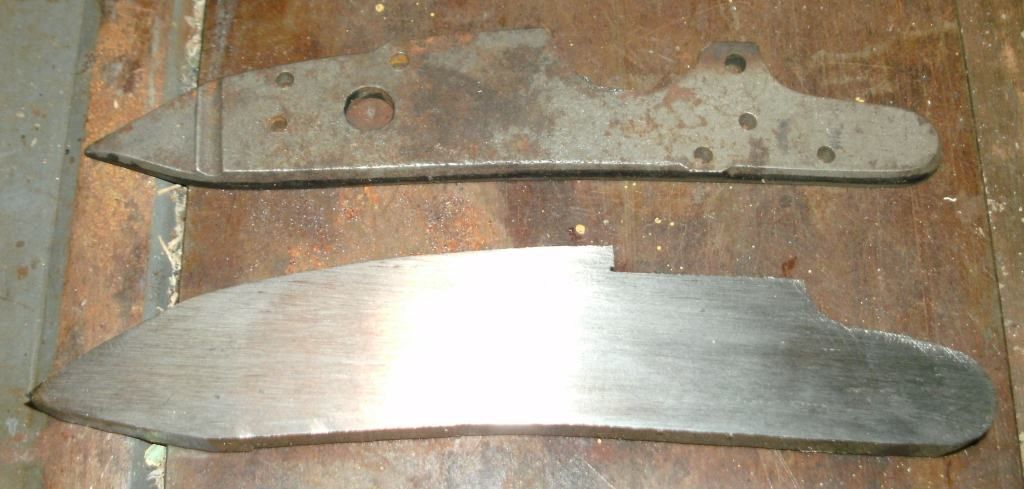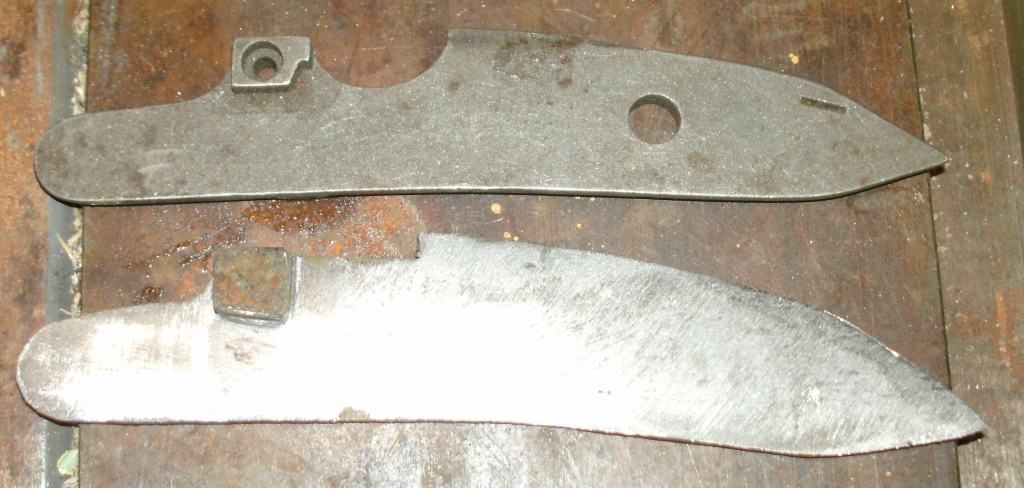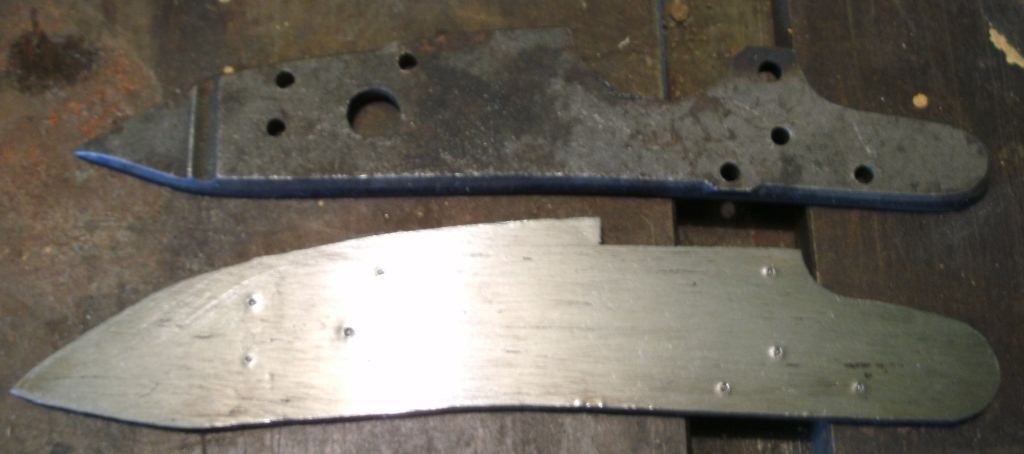Guys,
Since I finished my little Lehigh gun, it is time to start over. Here is how I start to make the flintlock. First I decide on the general style, in this case an early German lock the size of the large Siler, but with a bit more curve or droop in the rear part of the lockplate. This lock will have a detachable flashpan. Original lockplates were made from wrought iron and rarely brass. So this lock starts with a wrought iron barn hinge. This photo shows the barn hinge and a Siler lockplate that I use as a pattern.

I marked around the Siler plate giving more of a droop to the rear and cut the blank out with a hacksaw and grinder. Here is the blank along with the pattern.

The next step is to smooth the outer surface, done with files starting with an 18" coarse tooth file this work is quick. A finer tooth file is used to smooth the surface. Removing a large amount of metal with the fine tooth file is a really long chore. If you want to actually make a gun, get some "big boy" files.

Now the backside of the lockplate is filed flat but leaving the lump of metal to anchor the detachable pan. Filing around the lump is a bit more troublesome than the flat outer surface, but if you use the correct coarse big file it doesn't take long.

The next step is to mark the locations of the lockplate holes for drilling. Here is where the Siler pattern really shines. You simply center punch through the holes in the Siler pattern to get a good location. In this case I marked the tumbler hole and forward holes, then slightly repositioned the pattern for the droop and punched the rear holes.

Now the lockplate holes are drilled on the center punch locations. I did this with modern twist drills as the visitor crowds were not looking over my shoulder. Also, you can see the cutout for the detachable pan.

Here I have to stop the work for several months as I have an overseas assignment, so this will be continued later.
Jim

